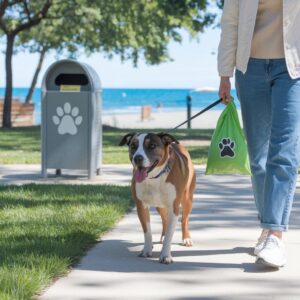With the benefit of hindsight, I probably should have written this article last month. It relates in no small part to the recent spell of warm, humid weather we were blessed with in the latter half of May and early June. This type of weather can lead to the blooming of dangerous blue-green algae in slow-moving and stagnant water, heatstroke in pets, etc. — and unfortunately, we’ve already seen the consequences of it here at Skeldale Vet Clinic.
These algae blooms are actually masses of toxic bacteria, and they thrive in shallow lake inlets, ponds, and stagnant rivers, which we have no shortage of in our region. Any trip with pets to these waters during the summer can be potentially dangerous, especially when the environment encourages algae growth.
You can listen this full article podcast here:
A Serious and Swift Threat – Blue-Green Algae
Sadly, we’ve already seen cases of blue-green algae toxin poisoning this year, some of which have resulted in fatalities. The toxins act very quickly — in some cases, an animal can become seriously ill or even die within minutes. What’s especially concerning is that pets don’t need to drink the water to be poisoned. Simply swimming in contaminated water, and then licking their coat later, is enough for the toxins to enter their system.
The best way to avoid this danger is to steer clear of stagnant water during June, July, and August. If you own livestock, it’s also a good idea to fence off areas where this type of algae bloom is likely to appear.
Symptoms of algae poisoning include drooling, panting, breathing difficulties, vomiting, disorientation, and even seizures. It’s a very difficult condition to treat successfully — so avoidance really is your best course of action.
Heatstroke in Pets
Another concern during the summer months is heatstroke, especially for animals left exposed to direct sunlight and heat, with no shelter or access to fresh, cool water.
Pets should never be left in vehicles, even for short periods, particularly when the temperature rises above 25°C. It doesn’t take long for a warm car to become dangerously hot.
Signs of heatstroke include:
- Heavy panting and laboured breathing
- Excessive drooling
- Lethargy, drowsiness, or unsteadiness
- Vomiting or collapse
There’s a common misconception that you should pour cold water over an overheated pet, or wrap them in cold towels. This can actually cause shock or cardiac arrest. Water from the cold tap is best, and avoid pouring it over the animal’s head, as they may already be struggling to breathe. Inhaling even small amounts of water can lead to drowning.
Heatstroke is a medical emergency, and if your pet shows signs of it, you should seek veterinary help immediately.
A Final Reminder
The summer months can be some of the most enjoyable for our pets — more walks, outdoor play, and family time. But with the heat and outdoor freedom come seasonal risks that can quickly turn serious.
Let’s stay vigilant and make sure the warm weather stays enjoyable for all the right reasons and you stay away from the summer hazards.
📞 Need veterinary advice? Contact our Ballinrobe or Belmullet clinics today.
** Dr. Conal Finnerty writes for MayoNews since 2020 and the content above was based on the original owned conted, Blue-Green Danger – Summer Hazards for Pets in Ireland






